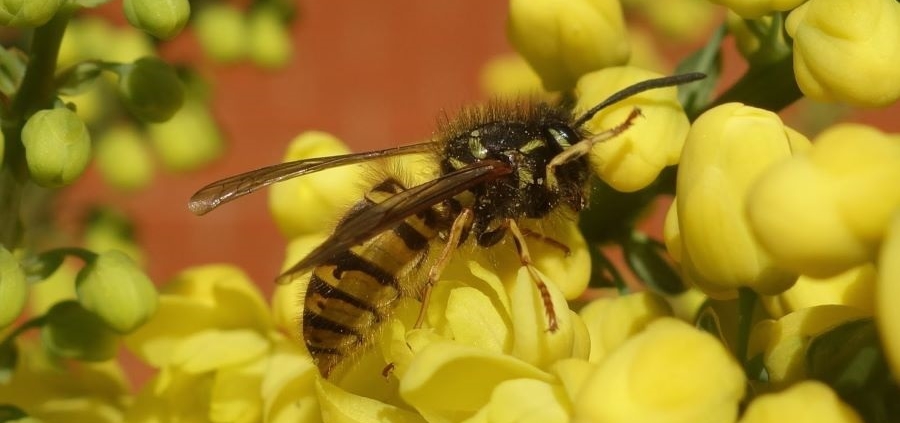Plants to Nourish and Encourage Native Bees
by Faye
To keep your local bee population well fed and happy, think ahead to have early blooming flowers in your garden. Bumble bees emerge from their winter nests while the weather is still cold, and need sustenance right away. The Masons are a little later, when the temperature is reliably above 14 degrees C. If there are no nectar flowers to welcome them, they will not survive.
BUMBLE BEES
Prefer pink and purple.
They hatch in mid February, so what is available?
- early Rhodos
- winter flowering Heathers
- Sarcococca
- Forsythia
- Winter Jasmine
MASON BEES
Males hatch about 2 weeks before females, and wait around until females emerge. If there is no food, they either die or fly away and seek food elsewhere. Mid March is usually when the males emerge.
Best plants to have for these early bees are:
- Pieris (main food source for Masons)
- Ribes sanguineum
- Erythronium, Camas, Trillium, other native bulbs
- all flowering natives
- Oemleria cerasiformis (Indian plum)
- Pulmonaria
Ideally, we should arrange to have other flowering plants around to feed the bees BEFORE the fruit trees are ready for pollination. Once the fruit trees are in bloom, probably April, we hope the bees will head to the trees instead of other earlier plants.
NATIVE BEES IN GENERAL
There are thousands of species of native bees, probably many hundreds in Victoria alone. Some are specialists (eg only attracted to squash, Aconitum, etc etc), and some are generalists, happy with any flower that passes by.
Generally the younger bees prefer the flat and easily accessible flowers, eg daisies, while some wiser and older ones know how to access even the most convoluted petal arrangement. The bees that like Aconitum for example, tend to be older bees and since only they can figure out the access to this flower, they will go from one Aconitum to the next, achieving cross pollination among all the flowers in the patch. Preferably, plant blocks of the same species of plant, not just an isolated specimen.
It’s extremely important to have a variety of flowering plants, especially natives if possible, throughout the growing season (early flowering to late flowering) to appeal to the widest variety of native bees. While some hybrids have been so carefully selected for colour, size, fragrance etc, many are practically sterile in the pollen-producing department. Native bees find native plants 4 times more attractive than the exotics.
Some good sources of pollen and/or nectar for native bees throughout the seasons: (Pollen supplies the protein and fats, while nectar provides sugars for energy. Those bees work hard!)
- Queen Anne’s Lace
- Ceanothus
- Sedum ‘Autumn Joy’
- Rubus Spectabilis (Salmon berry)
- Smilacina Stellata (Star Flowered Solomon’s Seal)
- Pussy Willow
- Sambucus
- Solidago
- Vaccinium
- Mahonia
- Penstemon
- Amalanchier
- Salix
- Symphoricarpos
- Achillea
- Rudbeckia
- Coreopsis
- Origanum
- Echinops
- Rosemary
- Digitalis – this one is very interesting – male flowers are higher up, less mature (!) than the females which are lower down. Bees always start at the bottom of the flower, work their way up. So they get they get the male pollen on their bodies at the top of one plant, then go to the next one and deposit it on the female flowers of the next plant, thereby fertilizing to set seed. Another good reason to plant flowers in blocks, the bees prefer it.


